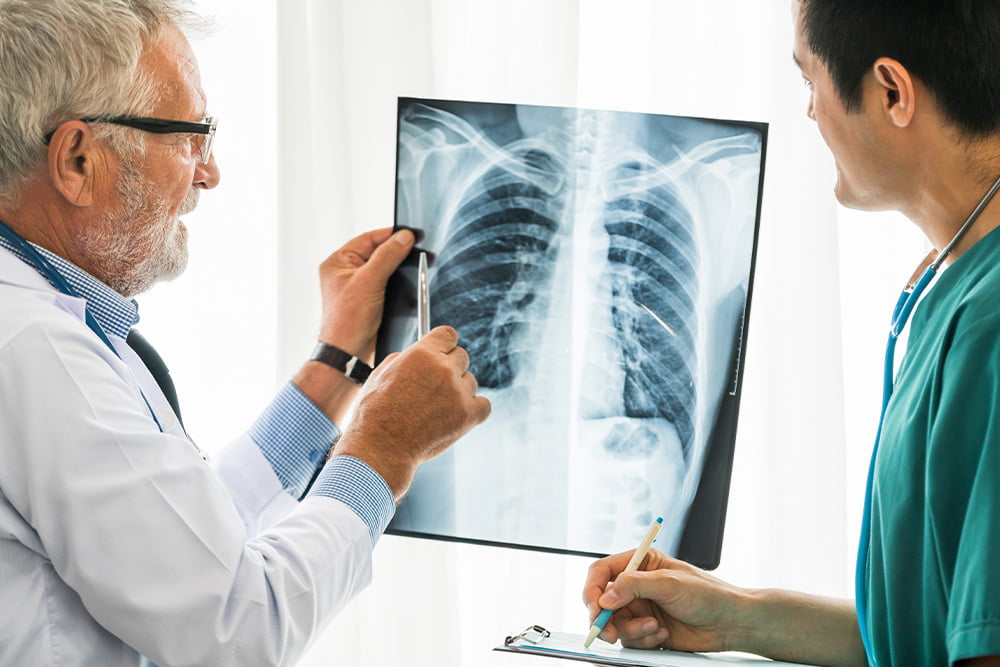We all know it — smoking is not good for you. Yet for many, it is a reality of our daily lives. Let’s face it, it’s addictive and it’s often not easy to stop. And some people don’t want to quit. Given all of this, what’s a person to do? What steps can you take to make a difference in your life?
Screening & Follow-Up Are Key
There are several ways testing or a screening can help provide early detection. One of the most common is one you may not know about — an incidental finding. A low-dose CT scan is another important screening.
Incidental Findings
An incidental finding happens when you are being treated for one condition and receive an x-ray or CT scan and the doctor notices an abnormal growth in your lung. At Bryan Health, we have a team that follows up on these findings with our patients.
This can be life-changing and life-saving. Here’s a perfect example of the power this has on a life. ‘Suzie’ is a smoker, but she doesn’t have any symptoms of lung cancer. While being seen in the ER, a chest x-ray is done and an abnormal growth is found. She does the follow-up testing and finds out she has very early-stage lung cancer. Because the follow-up testing is done with an advanced robotic procedure and it’s found so early, we can move quickly through staging and resect (remove) the tumor early. The cancer doesn’t grow or metastasize (spread), and further treatment is not needed.
Low-Dose CT Scan
This is a test specifically designed for early detection of lung cancer. Current guidelines for who should receive this screening are:
- A daily smoker within the last 15 years
- Age 50-80
- Smokes at least one pack a day for 20 years or two packs a day for 10 years
A low-dose CT scan is recommended yearly unless it has been more than 15 years since the person has used tobacco. If you qualify for this screening, talk to your doctor about ordering this test.
3 Reasons People Avoid Screening & 6 Reasons to Get Screened
If you or a loved one have any of these thoughts, consider the following.
Reason One: I Know Smoking is Bad For Me. I’m Not Going to Quit/I Already Quit So Why Get Screened?
- Getting screened for lung cancer is about life — your life. And, using the latest technology can catch cancer early, so you can go on enjoying life.
- If you no longer smoke, that’s great. But you are still at risk and should be screened. Think of it as an extension of your healthy habits.
Reason Two: I Don’t Have Any Symptoms
That’s exactly when you should be screened for two reasons:
- You could find out you don’t have cancer and your lungs are fine.
- You could find cancer before any symptoms occur, when it can be treated quickly and easily.
Reason Three: I Don’t Want to Know. What If They Find Something?
- If something is found that requires a biopsy (further testing), 95% of the time it is not cancer.
- If it is cancer and it’s found early, the five-year survival rate is 92%.
New Advances in Diagnosing & Treating Lung Cancer
When it comes to diagnostics (biopsy) to determine if a nodule (growth) is cancer, there are three options.
- A biopsy with Interventional Radiology (IR) — This is the most common and is usually a same-day procedure.
- Surgical resection is also an option, though it is much more invasive and requires a hospital stay.
- A new advancement in bronchoscopy (a way to look at the lungs with a small camera) — This has been a significant enhancement in care and is generally a same-day procedure.
IR Biopsy
A typical IR biopsy identifies just the lesion (growth) in question. Then a separate procedure is needed to determine the stage of cancer (i.e., no cancer or how much cancer there is and if it has spread) followed by surgery, if needed.
Bronchoscopy Advancement
This advancement is robotics, and the platform we use at Bryan Medical Center is Ion. The benefit of this type of procedure is in its completeness. With robotic-assisted bronchoscopy and the Ion platform, we are able to reach nearly anywhere in the lung for the nodule, although there are some limitations.
Where Ion and bronchoscopy really shine is not just in the identification of the nodule, or spot, on the lung. In the same procedure, we do a staging — determining if the cancer has spread — for all patients with biopsy of the lymph nodes in the chest. This reduces the need for staging after the initial diagnosis. As a combined procedure with Ion, we can reduce the time from nodule-to-knife (diagnosis of the lesion to when it can be surgically removed).
Take Advantage of Advances in Care
There are exciting advances in medicine that allow us to diagnose and treat lung cancer to make a significant difference in a patient’s life. The key is early diagnosis.

Ryan Martin, MD
Pulmonologist









